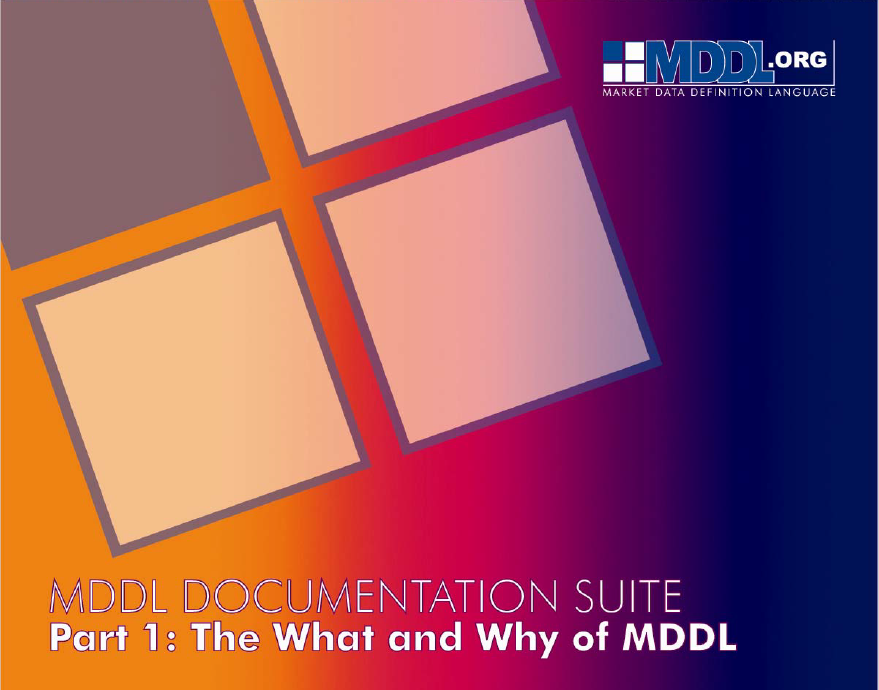Financial institutions face mounting challenges in standardizing their market data storage and management systems. The traditional approach of maintaining fragmented data architectures is becoming unsustainable. Market Data Definition Language (MDDL) offers a comprehensive solution, providing a standardized framework for managing diverse financial market data types.
The Growing Complexity of Market Data Management
Financial institutions grapple with an ever-expanding universe of market data types, from basic equity prices to complex derivatives structures. This challenge becomes particularly evident when organizations attempt to store related financial instruments, such as discount curves and inflation curves, in disparate tables without a unified data model.
The problem compounds when institutions need to scale their data architecture to accommodate new market data types. What starts as a simple solution for storing equity prices quickly becomes a labyrinth of tables, relationships, and custom adapters when trying to incorporate volatility surfaces, yield curves, and other complex market data structures.
Trading systems increasingly demand real-time access to this data, while regulatory requirements like BCBS 239 mandate clear data lineage and quality controls. It’s like trying to build a skyscraper with mismatched Lego blocks – eventually, something’s got to give.
Basics of Market Data Definition Language
Market Data Definition Language (MDDL) is a structured XML-based framework designed to standardize the representation, storage, and exchange of financial market data across diverse systems and platforms. Introduced in the early 2000s, MDDL was developed by the Financial Information Services Division (FISD) of the Software & Information Industry Association (SIIA). This open standard aims to tackle the challenges of inconsistent data models and fragmented architectures by providing a comprehensive schema that accommodates a wide array of financial instruments, indices, and trade data. Its structured approach has been pivotal in simplifying data integration, enhancing data quality, and supporting regulatory compliance in financial institutions.
Implementing MDDL: A Structured Approach
Understanding MDDL’s core concepts is essential for successful implementation. MDDL organizes market data into domains, each representing a specific category of financial information. The instrumentDomain handles securities and financial instruments, while the indexDomain manages market indices and related calculations. This domain-based approach ensures that similar data structures are stored consistently.
At its heart, MDDL uses properties to describe market data elements. Consider how MDDL handles trade data: instead of storing a simple price field, it creates a comprehensive structure including currency, timestamp, market identifier, and trade conditions. This approach ensures that every piece of data carries its full context:
<trade>
<last>
<mdDecimal>127.32</mdDecimal>
<currency>JPY</currency>
<indicatorsType>official</indicatorsType>
</last>
</trade>The implementation process follows three key stages. First, organizations must identify their current data feeds and map them to appropriate MDDL domains. Next, they need to convert their existing fields into MDDL properties, ensuring all required context is captured. Finally, they construct the XML instance documents that will carry their market data.
MDDL’s flexibility shines in handling complex market data structures. For example, when storing yield curves, MDDL can maintain relationships between different curve points while preserving metadata about calculation methods and market conventions. This structured approach eliminates the common problem of storing similar data structures in disconnected tables.
Integration with existing systems becomes straightforward through MDDL’s use of standard XML technologies. Organizations can leverage common tools like Apache Camel or MuleSoft for data transformation, while validation can be handled through standard XML Schema processors. This compatibility with existing technology stacks significantly reduces implementation complexity.
Measurable Benefits of Standardization
Organizations implementing MDDL report significant improvements in their data operations. These benefits stem from eliminating redundant storage solutions and establishing consistent data modeling practices. The standardization also accelerates new product development. By having a consistent data model, firms can more quickly integrate new data types and launch new analytical products.
Taking the First Step
Begin your journey toward standardized market data management by downloading comprehensive MDDL implementation guide. Our Gitlab repo contains a copy of original materials prepared by the team developing MDDL. This resource includes the complete MDDL specification, XSD schemas, and practical examples that will help you understand how MDDL can address your specific challenges. Remember, even the longest journey begins with a single step – or in this case, a single standardized data model.
Ready to Transform Your Market Data Architecture?
Download MDDL Implementation Package now and get instant access to specifications, schemas, and real-world examples. Don’t let data complexity hold your organization back – start standardizing your market data today.
By submitting this form, you agree that Finaprins may contact you occasionally via email to make you aware of Finaprins products and services. You may withdraw your consent at any time. For more details see the Finaprins Privacy Policy.

Photo by Jeremy Doddridge on Unsplash


